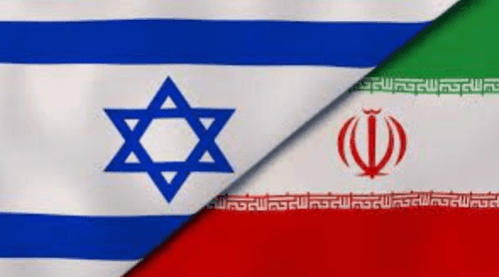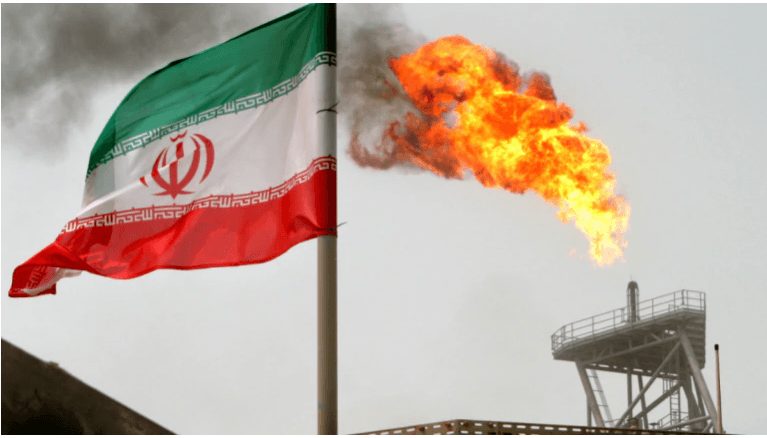
The U.S. airstrikes on Iran's nuclear facilities at Fordow, Natanz, and Isfahan on June 21, 2025, have ignited a geopolitical crisis of unprecedented magnitude, threatening to redraw the contours of global power. In the past 24 hours, a cascade of developments has intensified fears of a wider conflict: President Donald Trump tasked Vice President JD Vance with enlisting China to deter Iranian retaliation; Russia hinted at supplying nuclear warheads to Iran; unverified rumors suggest North Korean nuclear transfers; Iran's parliament voted to close the Strait of Hormuz; and Iranian missiles targeted areas near Israel's Dimona nuclear facility. Nations like Russia, China, Pakistan, and Malaysia have rallied behind Iran, while the IRGC threatens U.S. assets across the Gulf. This necessitates synthes of updates from maximum sources, to offer a rigorous analysis of strategic dynamics, and address the critical question: What can happen now?
The US' reckless escalation, fueled by volatile leadership, may risk a global catastrophe unless diplomatic restraint prevails.
A Surge of Provocations
Trump's directive to Vance to leverage China's influence reflects Washington's recognition of Beijing's economic sway, as China imports 90% of Iran's oil, valued at $40 billion annually (TimesNow 23/6). China's Foreign Ministry urged de-escalation but avoided commitment, prioritizing the Strait of Hormuz, through which 5.4 million barrels of oil flow daily (CNN 23/6). Russia's Dmitry Medvedev warned of potential nuclear warhead transfers to Iran, following Foreign Minister Abbas Araqchi's Moscow visit to counter "U.S.-Israeli aggression" (The Guardian 23/6). Unsubstantiated X posts allege North Korean warheads reached Iran, amplifying fears of a rogue nuclear axis, though no evidence confirms this (X posts 23/6).
Iran's parliament voted non-bindingly to close the Strait, pending Khamenei's approval, threatening 20% of global oil supply and pushing Brent crude to $80/barrel (Reuters 22/6). Iranian missiles struck near Dimona, intercepted by Israel's defenses, signaling Tehran's audacity (NBC News 23/6). The IRGC vowed "regrettable responses" against U.S. bases in Qatar, UAE, and Bahrain, hosting 40,000 troops (CBS News 22/6). Russia, China, Pakistan, Malaysia, and Turkey condemned the U.S., while Qatar and UAE stayed neutral, fearing economic fallout (Reuters 22/6).
A Triad of Volatility
Three dynamics define this crisis: erratic leadership, a fragmented conflict landscape, and a battle for global dominance. Trump's shift from diplomacy offering a two-week negotiation window to airstrikes, flanked by hawks Marco Rubio and Pete Hegseth, sidelined moderates like Tulsi Gabbard, who disputed Iran's nuclear weapon intent (The Guardian 18/6). His claim that the strikes "obliterated" Iran's nuclear sites contradicts Pentagon assessments of "severe but incomplete" damage, revealing a disconnect between rhetoric and reality (BBC 22/6). Benjamin Netanyahu's campaign to neutralize Iran, driven by domestic unrest and ICC scrutiny, aligns with Trump's bravado but risks U.S. entanglement (Washington Post 22/6). Khamenei's silence, contrasted with IRGC's threats, suggests a regime grappling with nuclearization or economic warfare options (CNN 23/6).
The conflict's complexity surpasses historical analogs like the 2003 Iraq War. Iran's proxies Hezbollah, Houthis, and Iraqi militias are depleted, with Hezbollah at 50% capacity, limiting conventional retaliation (NBC News 23/6). Iran's 400kg of unaccounted enriched uranium and cyber capabilities, demonstrated in 2020 Israeli water system attacks, pose asymmetric threats (BBC 22/6). Russia's nuclear posturing and North Korea's alleged involvement aim to deter U.S. escalation, while China's neutrality masks a bid to erode Washington's regional clout (Financial Express 22/6). The U.S. seeks unipolar dominance, but its strikes alienated Germany and strained India's neutrality, risking diplomatic isolation (Reuters 18/6). Satellite imagery shows extensive damage at Fordow, with craters and ash, but Iran claims rebuilding is underway, signaling resilience (NYT 22/6).
The global order faces a critical juncture. A Strait closure could cost $500 billion annually, with oil at $150/barrel, hitting Asia hardest (NDTV 22/6). Russia and China's support for Iran, bolstered by Pakistan's SCO alignment, challenges U.S. hegemony, while the UN's paralysis underscores governance failures (NBC News 22/6). Iran's missile advancements, including 1.5-ton warheads, contrast with its economic fragility (30% inflation), creating a desperate yet capable adversary (BBC 22/6).
India's High-Stakes Balancing Act
India, reliant on Middle East oil for 60% of imports, faces severe risks. A Strait closure threatens 7% GDP growth, inflating its $200 billion import bill by 25% (NDTV 23/6). Iran's nuclearization or U.S. containment could derail India's $500 million Chabahar Port investment, vital for bypassing Pakistan (Financial Express 22/6). U.S. pressure to align against Iran, with 27% tariffs threatened, clashes with India's SCO ties, risking economic penalties (TimesNow 23/6). Regional instability could embolden Pakistan-backed terrorism, costing $5 billion in defense upgrades.

India's diversified oil purchases from Russia and the U.S. mitigate some risks, but 10,000 nationals remain vulnerable (Hindustan Times 22/6). India must secure $10 billion in oil contracts with Iraq and Venezuela, negotiate U.S. waivers for Chabahar, lead a BRICS ceasefire initiative, evacuate citizens via Operation Sindhu, and invest $2 billion in cybersecurity (NDTV 23/6).
What Can Happen Now?
Iran's response will shape the immediate trajectory. A hybrid campaign cyberattacks on U.S. financial systems, Houthi drone strikes on Gulf oil facilities, and partial Strait disruptions is most likely, leveraging Iran's asymmetric strengths while avoiding regime-threatening U.S. retaliation. This could cost $200 billion globally, with oil at $120/barrel, but risks U.S. strikes on IRGC bases, potentially killing 20,000 (NBC News 23/6). China's economic stake in the Strait and Russia's nuclear rhetoric may temper Iran's aggression, though Moscow's warhead threat emboldens Tehran's defiance (The Guardian 23/6). A graver scenario is Iran's nuclear breakout, withdrawing from the NPT and testing a warhead within 18 months, using its unaccounted uranium. This could trigger preemptive U.S.-Israeli strikes, costing 100,000–500,000 lives, or force a new nuclear deal, reshaping non-proliferation norms (BBC 22/6). Diplomacy, battered by the UN's inaction and Europe's failed mediation, hinges on Qatar-Oman channels, but Trump's regime change rhetoric dims prospects (Reuters 23/6).
Long-term, the crisis could fracture the global order. A U.S.-led coalition with Israel, Saudi Arabia, and UAE might isolate Iran, slashing its $100 billion oil revenue, but risks destabilizing Gulf regimes and empowering China-Russia (Washington Post 22/6). Iran's alignment with nuclear-armed states could erode non-proliferation frameworks, forcing India to bolster its nuclear deterrence. A miscalculation cyberattacks crippling U.S. grids, a Strait blockade, or nuclear escalation could ignite a $15 trillion conflict with -10 million casualties (Reuters 22/6). India's leadership in BRICS-mediated de-escalation, leveraging its non-aligned credibility, is pivotal to averting this catastrophe.
Precarious Path Forward
The U.S.-Iran crisis, driven by Trump's gamble, Russia's provocations, and Iran's brinkmanship, teeters on the edge of global disaster. Iran's hybrid retaliation, a U.S. containment push, or a nuclear gambit could redefine power dynamics. India must champion diplomacy, secure its economic and strategic interests, and lead restraint to preserve a fragile world order. The stakes economic collapse, regional war, or nuclear proliferation demand urgent global cooperation.
[Major General Dr Dilawar Singh, a Ph.D. with multiple postgraduate degrees, is a seasoned expert with over four decades of experience in military policy formulation and counter-terrorism. He has been the National Director General in the Government of India. With extensive multinational exposure at the policy level, he is the Senior Vice President of the Global Economist Forum, AO, ECOSOC, United Nations. He is serving on numerous corporate boards. He has been regularly contributing deep insights into geostrategy, global economics, military affairs, sports, emerging technologies, and corporate governance.]


![Too drunk to walk? Karnataka to drop heavily intoxicated revellers home, sets up rest centres for New Year crowds [Watch] Too drunk to walk? Karnataka to drop heavily intoxicated revellers home, sets up rest centres for New Year crowds [Watch]](https://data1.ibtimes.co.in/en/full/826552/too-drunk-walk-karnataka-drop-heavily-intoxicated-revellers-home-sets-rest-centres-new-year.png?w=220&h=135&l=50&t=40)








![Too drunk to walk? Karnataka to drop heavily intoxicated revellers home, sets up rest centres for New Year crowds [Watch]](https://data1.ibtimes.co.in/en/full/826552/too-drunk-walk-karnataka-drop-heavily-intoxicated-revellers-home-sets-rest-centres-new-year.png?w=220&h=138)
![Too drunk to walk? Karnataka to drop heavily intoxicated revellers home, sets up rest centres for New Year crowds [Watch]](https://data1.ibtimes.co.in/en/full/826552/too-drunk-walk-karnataka-drop-heavily-intoxicated-revellers-home-sets-rest-centres-new-year.png?w=220&h=135)


